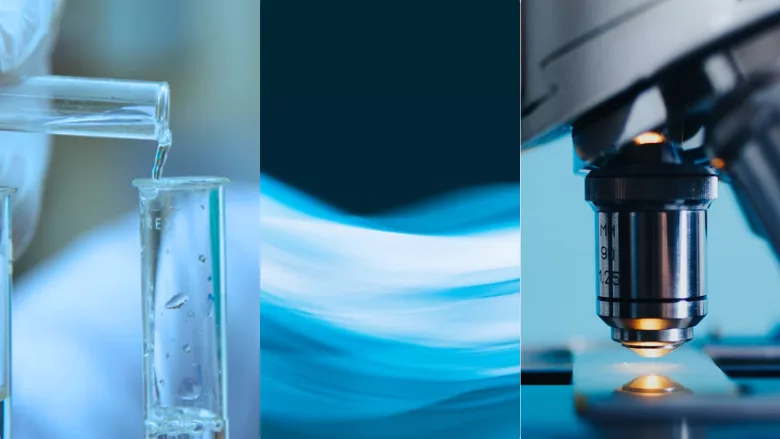Top Food Safety Innovations of 2023

With each passing year, new and emerging technologies and techniques that have promise for advancing food safety are developed and validated—and 2023 was no different. The following list summarizes the top five food safety innovations of 2023, based on which articles made the biggest waves with the Food Safety Magazine audience, in ascending order.
5. Sustainable Organic Acid an Effective Disinfectant Against Foodborne Pathogens, Biofilm
A study has demonstrated the antimicrobial efficacy of a novel organic acid compound against common foodborne pathogens and biofilm. The compound, tetrapotassium iminodisuccinic acid salt (IDSK), was shown to be a promising disinfectant, and is also biodegradable and sustainable. IDSK samples were tested against Salmonella enterica, Escherichia coli, Pseudomonas aeruginosa, Staphylococcus aureus, and Enterococcus faecalis, individually and as part of biofilms. Overall, IDSK showed efficient antibacterial activity against gram-positive and gram-negative strains, completely suppressing the growth of some strains, and was also able to degrade mature biofilm by approximately 40 percent. Read more about the study here.
4. New Sensor Technology Detects Bacteria in Milk in Real Time
Researchers have introduced a novel, thermal biosensor for real-time detection of E. coli, demonstrating its ability to detect the pathogen in milk without sample preparation. The technology is based on screen-printed electrodes (SPEs), functionalized by a simple surface-imprinting process that represents an easily scalable strategy for the production of synthetic receptors. The SPEs were used in combination with the heat transfer method to detect E. coli. The sensor would be easy to mass produce, and shows potential as a low-cost, rapid tool for onsite microbial indication. Read more about the innovation here.
3. Study Shows Potential of Antimicrobial Blue Light for Listeria Inactivation in Food Processing Plants
Antimicrobial blue light has been studied increasingly in recent years due to its reported potential to inactivate multiple bacteria. In one such study, researchers provided additional support for the food safety applications of antimicrobial blue light, demonstrating its ability to eradicate both dried cells and biofilms of Listeria monocytogenes. The pathogen was inactivated most rapidly when placed on polystyrene, a widely used type of plastic. Read more about the study here.
Looking for quick answers on food safety topics?
Try Ask FSM, our new smart AI search tool.
Ask FSM →
2. Researchers Aim to Make Cured Meat Safer With “No Nitrite Added” Curing Process
Nitrites and nitrates, often added to foods such as cured meat to preserve quality and extend shelf life, are subject to increasing scrutiny as research about possible negative health effects emerge. However, researchers from Texas A&M University have reported that they are in the process of developing a method for curing meats without nitrites, with funding from the U.S. Department of Agriculture’s Agriculture and Food Research Initiative (USDA’s AFRI). Specifically, the researchers are exploring the feasibility of a novel amino acid alternative curing system for meat, which is expected to eliminate the need for direct or indirect addition of sodium nitrite in cured meat products. Knowing that nitrites and nitrates occur naturally in humans and in some foods, the researchers believe it is possible that adding the amino acid L-arginine to meats would activate the nitric oxide synthase (NOS) enzyme contained within. NOS converts L-arginine to NO and another amino acid, L-citrulline. NO creates the characteristic cured pink color associated with cured meats, and two NO molecules can combine to form nitrite, which serves as an antioxidant and antimicrobial. Read more about the innovation here.
1. Researchers Develop Tray That Alerts When Food is Contaminated by Pathogenic Bacteria
Researchers have created a new packaging tray that can signal when Salmonella or other foodborne pathogens are present in raw or cooked foods, such as chicken. The prototype tray, which is shaped like a shallow boat, is lined with a food-safe reagent that allows a built-in sensor to detect and signal the presence of Salmonella, enabling producers, retailers, and consumers to tell in real time whether the contents of a sealed food package are contaminated without having to open it, preventing exposure to contamination. The technology can readily be adapted to test for other common foodborne pathogens, such as E. coli and L. monocytogenes, and potentially reduces the need for expensive, lab-based detection processes. Read more about the innovation here.
Honorable Mentions
Other popular articles from 2023 about food safety innovations and emerging technologies that did not make the top five list include the discovery of a soil microbe that can degrade the harmful mycotoxin patulin; a study demonstrating the potential of superheated, dry steam to clean food manufacturing facilities where the use of traditional wet sanitation is limited, such as in low-moisture food production and produce packhouses; and the development of mini pH sensors that indicate food spoilage in real time and can be incorporated into existing food packaging methods.
This list is only a sampling of the myriad studies and innovations that Food Safety Magazine covered in 2023. Browse this webpage to catch up on the latest food safety science!









